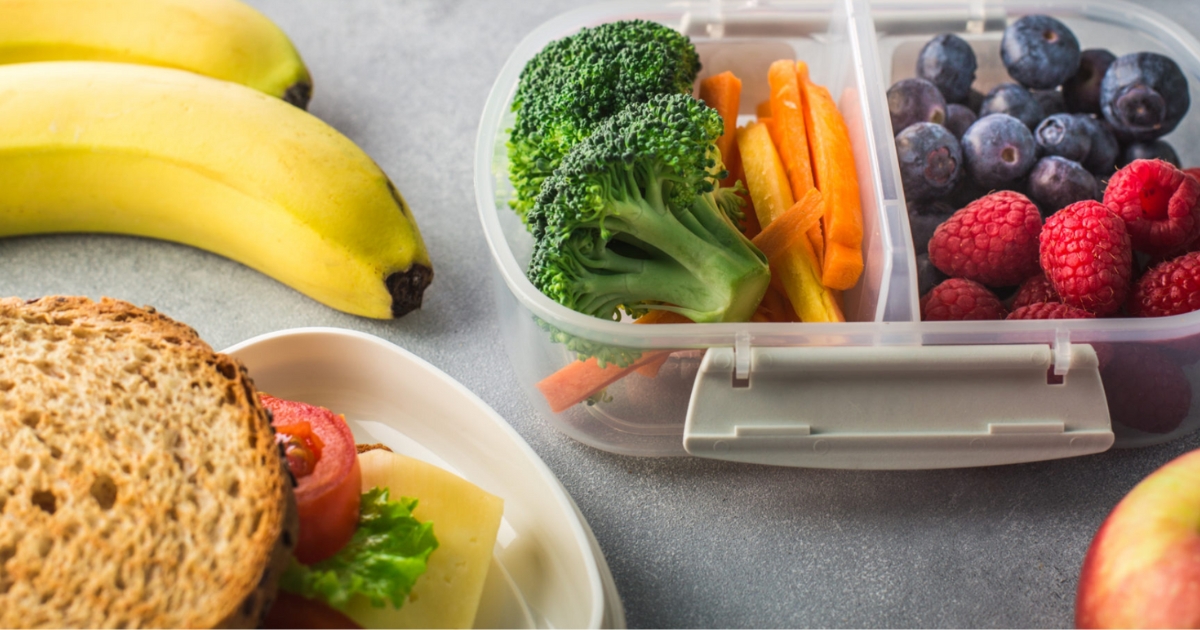
Category: Cooperative Extension

Spring into camp lunch safety!
May 26, 2023 Written by Lauren Naumann, Dietetic Intern; Diane Oliver, , MPH, RDN, LDN, EFNEP Agent
The spark of the warm weather signals to students the end of another academic year. As we inch closer and closer to summer, that familiar feeling of rest and relaxation—for both you and your kids—is almost in reach. Some things can get pushed to the back burner during these times, but one aspect of life that shouldn’t is your child’s safety.
The bright sun and warmer weather are great for us, but not so great for our packed foods. During this time of year, extra precautions should be taken to avoid foodborne pathogens in your kids’ packed lunches. Most bacteria grow best when in moist, warm environments, which is more likely to happen during this season. However, there are ways we can prevent our food from being contaminated and keep lunches healthy and delicious for the kids.
Storing Food for Lunch
Proper food safety starts with the purchasing and storage of your food. If you plan to pack deli meat sandwiches, salads, eggs, or fruit kept in the fridge, it is important to follow proper handling so food doesn’t become contaminated before being packed for lunch. Here are some general guidelines for storing food
- Make sure refrigerated foods are stored at 41°F or lower and frozen foods are stored at 0°F or lower
- Avoid keeping foods out of the refrigerator/freezer for more than 4 hours
- Always check food for mold or spoilage by checking expiration dates
- Ready-to-eat, opened foods should be kept in the fridge for no longer than 3-7 days and, after that time, be thrown away
Prepping the Lunches
Before putting the lunches in bags, we need to ensure proper handling and preparation of the food. First, start by washing your hands for at least 15-20 seconds with soap and running warm water. Dry your hands with a disposable paper towel to not contaminate your clean hands. If you are prepping food such as deli meat sandwiches, wraps, or salads, make sure you prep on a sanitized surface. Never prep raw meat, fish, or poultry on the same cutting boards or surfaces as ready-to-eat foods such as bread, lunch meat, or produce. Ensure that all surfaces and utensils have been properly washed before and after food preparation. You can sanitize your surfaces using one tablespoon of bleach mixed with 1 gallon of water.
Keep Foods at the Right Temp
Many foods we think of packing in kids’ lunches – cold sandwiches, salads, milk – are great options but are more likely to spoil if not properly packed. Here are some tips for packing cold foods:
- Keep food in the fridge as long as possible before transferring it to the lunch box/bag
- Purchase a lunch box or bag that is insulated and add reusable ice packs to keep the food as cold as possible
- Throw away any cold food that was out of the fridge for more than 4 hours
- If icepacks aren’t available, freeze parts of your kid’s lunch, such as a juice box, sandwich (without any product on it), or water bottle.
- Avoid warm environments or direct sunlight on the lunch box/bag
Most kids will not have access to a microwave, so avoid packing foods that require hot holding or reheating. If you would still like to pack hot foods, place them into an insulated container such as a thermos. Hot foods must be cooked and held at a temperature of at least 135°F.
Pack Without Temp Control
If you are concerned or unable to keep foods at their correct temperatures, there are other foods you can pack for your kids that do not require refrigeration. Some foods to pack include:
- Peanut butter and jelly sandwiches
- Crackers and peanut butter
- Whole fruits and vegetables stored at room temp (bananas, bell peppers, apples, carrots)
- Popcorn or pretzels
- Canned tuna fish (without added mayonnaise)
- Peanuts or tree nuts
Try to incorporate these tips this spring and summer to keep your kids healthy and safe!
